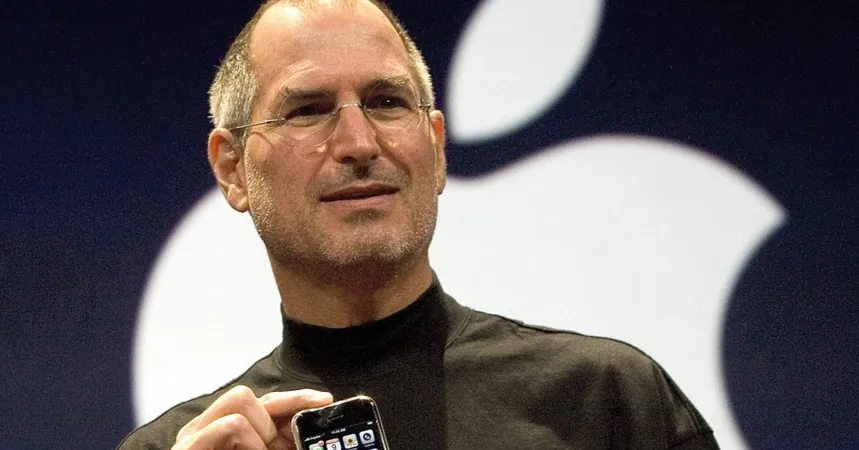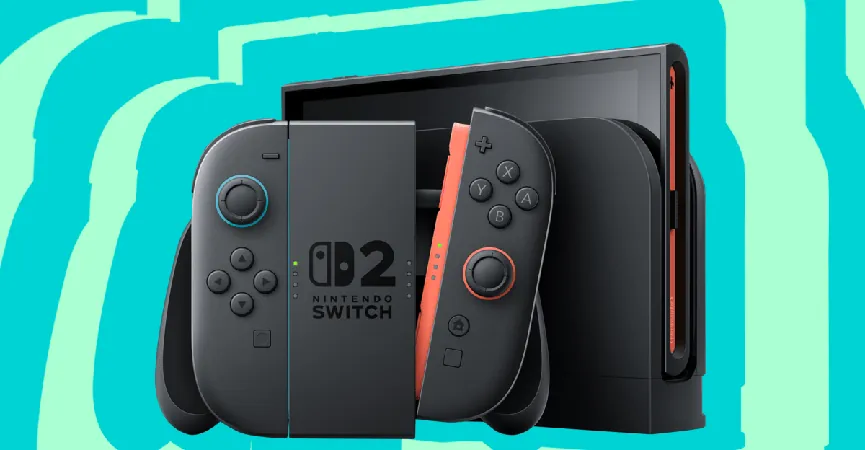
The Fate of the iPad: Will Foldable iPhones Spell Its Doom?
2025-03-31
Author: Yan
The Fate of the iPad: Will Foldable iPhones Spell Its Doom?
When Steve Jobs unveiled the iPad to the world back in 2010, he emphasized its role as a revolutionary “third category of device.” It was aimed to bridge the gap between smartphones and laptops, offering a unique blend of functionalities. Fast forward over a decade, and with the advent of foldable iPhones, one must ask: Could this “third device” soon become obsolete?
A New Era for Mobile Devices?
The concept of a foldable iPhone, tentatively dubbed the ‘iPhone Fold,’ brings an exciting proposition: it could deliver iPad mini-like capabilities while doubling as a smartphone. This has many consumers, including myself, pondering the relevance of the iPad moving forward.
I recall fondly my days with the iPad mini, cherishing its portability and function. However, when I transitioned to a full-time setup with the iPad Pro paired with the Magic Keyboard, I found myself inadvertently sidelining the compact charm of the mini. My 13-inch M4 iPad Pro operates more like a laptop than a tablet, diminishing my use of its tablet features.
Reflecting on Jobs' original vision, I find myself questioning the iPad's unique position in today's tech landscape. The iPad was created to excel in tasks like web browsing, video streaming, and emailing—areas where it had to prove its superiority over both smartphones and laptops. Yet, as devices evolve, particularly with larger iPhones and sleeker Macs, the iPad has faced increasing challenges to justify its existence.
Foldable iPhones: The Game Changer?
The anticipated release of the iPhone Fold introduces a complication. Early models are projected to be premium devices with a hefty price tag of around $2,000, which initially means that the more budget-friendly $349 iPad will continue to thrive in the market, appealing to a different consumer base. However, looking ahead five years, if foldable technology gains traction, Apple could roll out more affordable options that might overshadow the iPad’s appeal.
Next year’s iPhone Fold is rumored to feature a 5.5-inch outer display and a 7.8-inch inner display, possibly offering a size that feels both compact yet capable when folded, akin to the iPad mini upon unfolding. History has shown that larger iPhones are favored by users, suggesting that we may soon see a varied range of foldable iPhones that blur the lines further between smartphones and tablets.
Ultimately, the future could see the iPad transitioning to a more niche, budget-friendly device, or alternatively, it might evolve into its own premium foldable counterpart. However, for the average consumer, the necessity for a dedicated iPad could diminish as foldable iPhones gain in versatility and functionality.
As we reflect on the legacy of Steve Jobs and his vision for the iPad, it’s clear that the competitive landscape is shifting. The coming years may mark the beginning of a fundamental change in how we interact with mobile devices. Will foldable iPhones lead to the decline of the iPad? Only time will tell, but one thing is certain—the tech world is watching closely.


 Brasil (PT)
Brasil (PT)
 Canada (EN)
Canada (EN)
 Chile (ES)
Chile (ES)
 Česko (CS)
Česko (CS)
 대한민국 (KO)
대한민국 (KO)
 España (ES)
España (ES)
 France (FR)
France (FR)
 Hong Kong (EN)
Hong Kong (EN)
 Italia (IT)
Italia (IT)
 日本 (JA)
日本 (JA)
 Magyarország (HU)
Magyarország (HU)
 Norge (NO)
Norge (NO)
 Polska (PL)
Polska (PL)
 Schweiz (DE)
Schweiz (DE)
 Singapore (EN)
Singapore (EN)
 Sverige (SV)
Sverige (SV)
 Suomi (FI)
Suomi (FI)
 Türkiye (TR)
Türkiye (TR)
 الإمارات العربية المتحدة (AR)
الإمارات العربية المتحدة (AR)